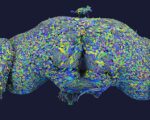Study Suggests Depression May Be Tied to Brain’s Attention-Guiding Network

Enlarged Salience Network in Depression Identified as Potential Early Detection Biomarker, Study Finds
New Insights into Depression Linked to Enlarged Salience Network
Recent research is providing deeper insights into how the brain is involved in depression, with a significant discovery centered on the salience network. This particular brain network, primarily located in the frontal cortex and striatum, is tasked with processing rewards and directing attention to critical stimuli. According to the study, individuals who developed symptoms of depression were found to have a salience network that was twice the size of those without the condition. These findings suggest that alterations in this brain network could pave the way for earlier detection and more tailored treatments for depression.
Understanding the Salience Network
The salience network plays a crucial role in the brain’s decision-making processes, as it helps identify and prioritize which stimuli—whether external events or internal thoughts—deserve the most attention. It not only processes rewards but also helps to focus cognitive resources on important tasks. In individuals suffering from depression, researchers have observed a significant enlargement of this network, potentially providing clues as to why people with depression experience challenges related to attention, motivation, and cognition.
The Link Between Network Size and Depression
One of the most intriguing aspects of this discovery is the substantial size difference in the salience network between individuals with depression and those without. The study revealed that the network was nearly twice as large in those with depression, suggesting that the brain might be structurally different in individuals predisposed to the condition. This change in brain architecture appears to be stable and not dependent on the mood fluctuations typical of depression, pointing to a potential biological marker that exists before the onset of symptoms.

Implications for Early Detection
The stability of the enlarged salience network opens up exciting possibilities for early detection of depression. If this characteristic is indeed present before depressive symptoms manifest, it could serve as an early warning sign, helping clinicians identify individuals at risk long before they develop the disorder. This could allow for interventions designed to prevent the condition or mitigate its impact through personalized treatment plans based on the brain’s unique structure.
Potential for Personalized Treatment
With the identification of the enlarged salience network as a potential biomarker for depression, researchers are hopeful that this discovery could lead to more effective, individualized treatment approaches. Traditional treatments for depression, such as medication and cognitive behavioral therapy, could be fine-tuned to target the specific neural characteristics of the patient, optimizing therapeutic outcomes. Additionally, this discovery could spur the development of new therapies that address the underlying brain network abnormalities directly.
A Path Forward for Depression Research
The discovery of the enlarged salience network in depression represents a major step forward in understanding the biological underpinnings of this complex mental health condition. While more research is needed to confirm the findings and explore how they can be applied in clinical practice, the potential for this network to act as an early biomarker is a promising development. It may help shift the focus of depression treatment from managing symptoms to preventing the condition altogether by addressing the brain’s structural vulnerabilities.





















